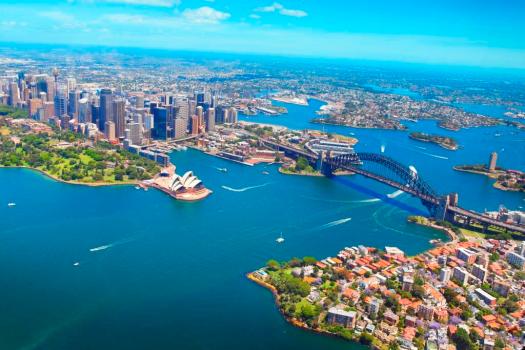Increased discussion about immigration to Australia has done nothing to stem the tide of people coming to Australia. In fact, the numbers are rising, not falling.
Overseas immigration into NSW alone last year exceeded the combined populations of Wagga Wagga and Tamworth, two of the state’s largest regional cities. Figures released by the Australian Bureau of Statistics show that Australia’s net overseas migration (NOM) for the year ending 30 June 2017 was 245,400, an increase of 27 percent from the previous 12 month.
New South Wales and Victoria recorded their highest ever levels of NOM, increasing by 31 percent and 23 percent respectively. This growth meant both states surpassed their previous recorded high in 2008-09.
All Australian states and territories recorded an increase in NOM compared with last year. New South Wales was the most popular destination, with a NOM of 98,600, followed by Victoria with 86,900. This was followed by Queensland (31,100), Western Australia (13,100), South Australia (10,500), the Australian Capital Territory (2,800), Tasmania (1,500) and the Northern Territory (900).
Overall, Australia’s population grew by 388,100 people in the 12 months to the end of June 2017, to reach 24.6 million. This was an increase of 1.6 percent. On current grow rates, Australia’s population will pass 25 million by the end of 2018.
Victoria was the fastest growing state, with a population increase of 2.3 percent, followed by the ACT on 1.7 per cent.
Australia’s population is growing faster than that of other major OECD countries. It is also highest of any country in the region except for Papua New Guinea (2.1 per cent).
Australia is now ranked 53rd in the world. Despite its comparatively high growth rate, the ABS expects that to fall to 56th by 2050, because of high population growth in many developing countries.
The figures for interstate migration show some interesting trends. NSW may be the mist popular state for overseas immigrants, but it is bleeding people to other states, with 15,000 people leaving for other parts of Australia in the year to 30 June 2017.
Western Australia lost nearly 12,000 people to interstate migration, South Australia lost 6,000, and the Northern Territory lost 3,500. Queensland and Victoria both gained 17,000.
The changes in the relative sizes of Australian states and territories have many consequences, politically and economically. Political representation in the House of Representatives is based on population (except that Tasmania is guaranteed a minimum five seats, and so is GST distribution.
But more significant is the rate of population increase. Both major parties support high rates of immigration, though they tend not to be very vocal about it. Most minor parties, and many voices in public debates, are calling for a lower intake.
This latest data shows they are losing the battle, and those wishing for a ‘Big Australia’ are getting their way.
ABS data also shows that the old furphy of immigrants ‘taking Australian jobs’ is unfounded. On the same day it released the population data, the ABS also released its employment statistics.
In a year of record immigration, full-time employment grew at an even faster rate than immigration, with more than 300,000 full-time jobs added nationwide in the last year.
Comment below to have your say on this story.
If you have a news story or tip-off, get in touch at editorial@governmentnews.com.au.
Sign up to the Government News newsletter
Most read
Scathing report finds little has changed at PwC
Inquiry to consider how federal govt can address councils’ sustainability issues
Qld council welcomes progress on massive battery system
‘Local’ procurement turns out not to be so local, committee hears
Another report finds local government falling down on cyber security

